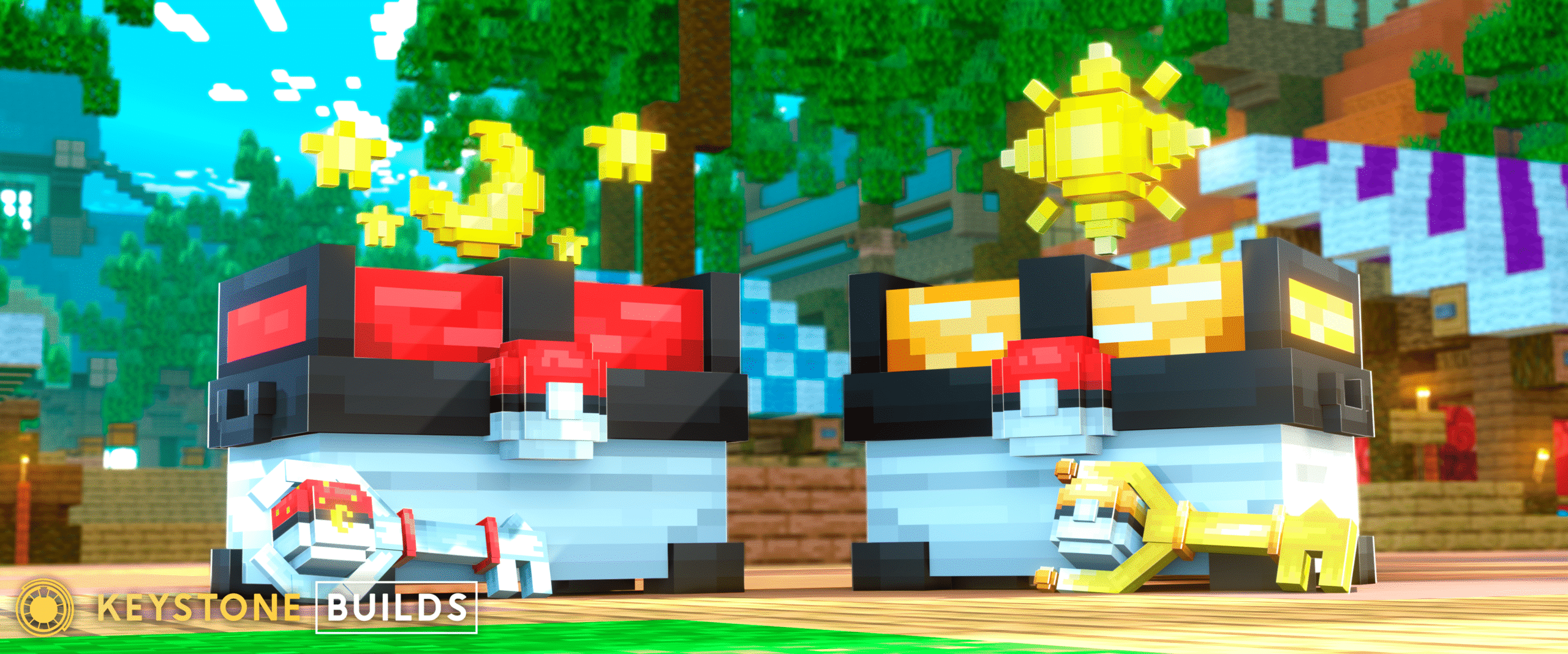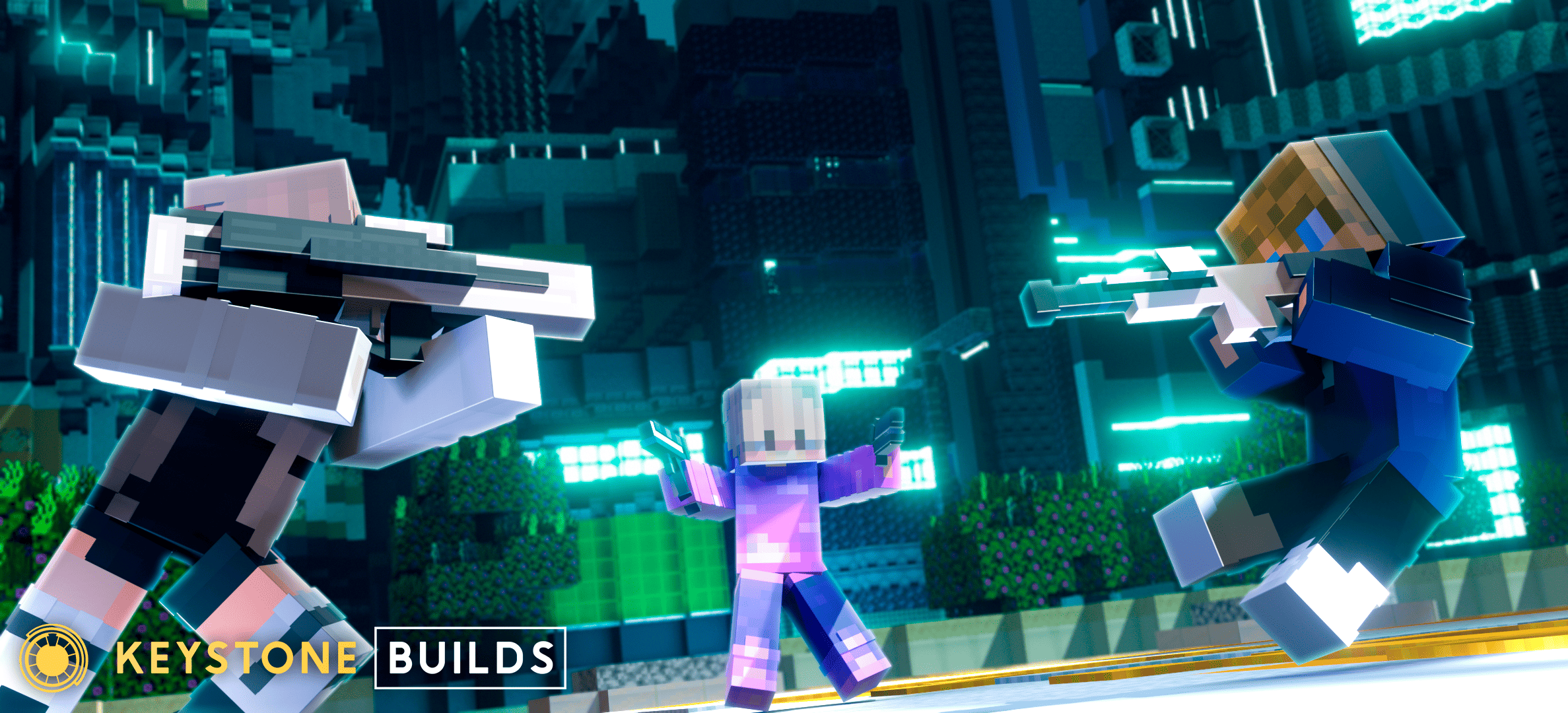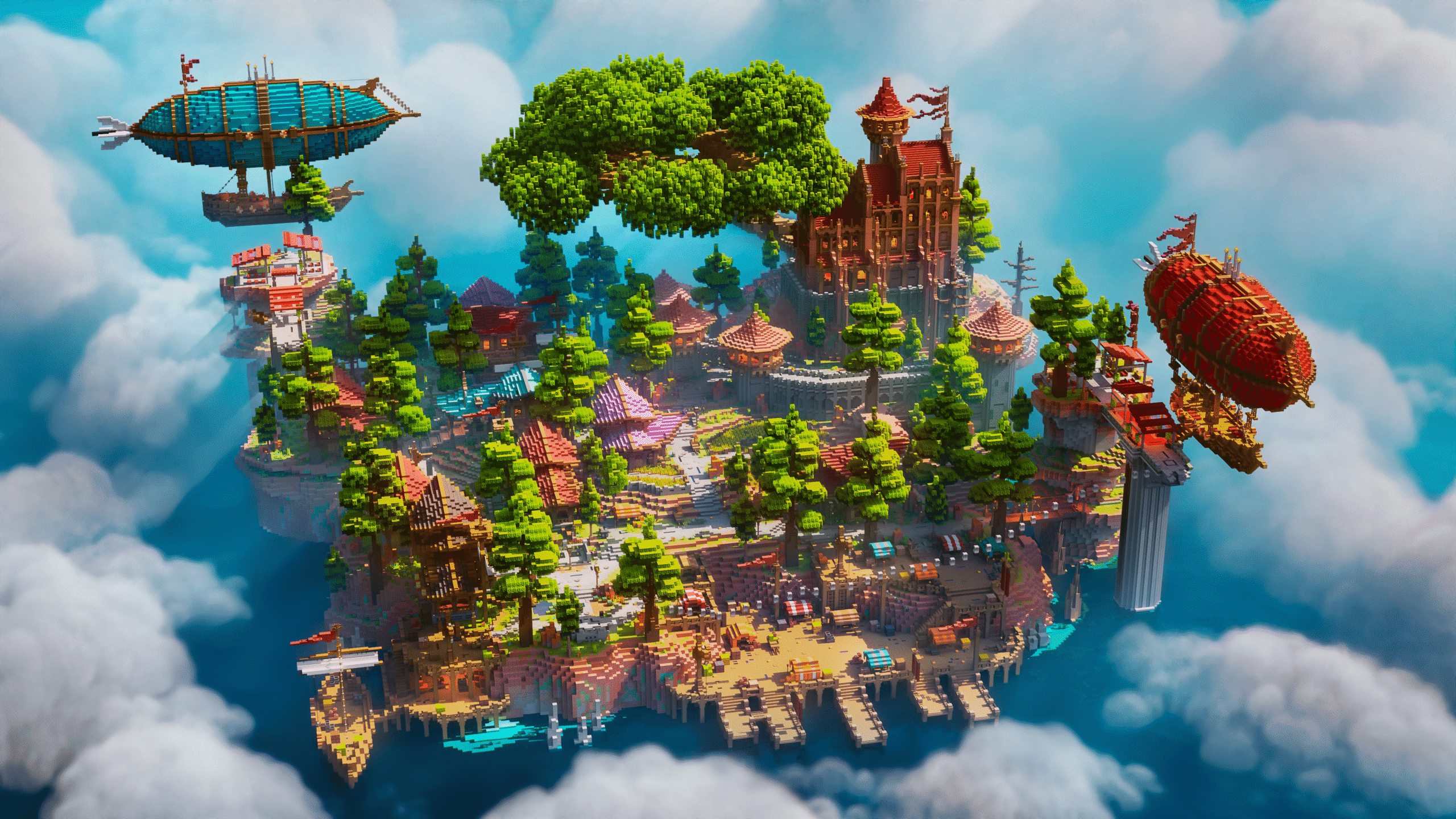Minecraft’s global popularity shows no signs of slowing down in 2025. With a massive player base and one of the most active creative communities in gaming, it’s no surprise that custom server maps have become a cornerstone of the Minecraft experience. From breathtaking cities to thrilling mini-games, these maps define the player experience and have the potential to reach millions.
These maps often become the centerpiece of viral YouTube videos, streaming events, or community challenges. They attract influencers, server owners, and casual players alike, each looking for the next big thing to play, showcase, or expand upon. The truly viral maps go beyond simple entertainment—they generate conversations, memes, collaborations, and even media coverage, creating a ripple effect throughout the Minecraft ecosystem.
But what makes a Minecraft map go viral? What separates a good map from one that takes the internet by storm? In this guide, we’ll break down the key traits, showcase some of the most iconic viral maps, and share strategies you can use to boost the success of your own creations. Going viral isn’t just about downloads—it’s about creating a lasting memory that players want to revisit and recommend. It’s about building something that feels alive, immersive, and worth sharing across social platforms, from Reddit threads to Twitch clips and TikTok edits.
Characteristics of Viral Minecraft Maps
Viral maps don’t just look good—they offer an experience that’s hard to forget. Here are the essential traits that many of the most downloaded and talked-about maps share:
Innovative Gameplay
Unique mechanics and fresh ideas are often the spark behind a viral hit. Whether it’s a never-before-seen mini-game, puzzle system, or immersive adventure mode, maps that break the mold get people talking—and playing. Adding twists to familiar gameplay or mixing genres (like PvP + parkour + roleplay) can set your creation apart. Innovation gives your server something players haven’t seen before—and that makes them eager to share it.
Gamers love novelty. Introducing dynamic weather systems, game-changing power-ups, or integrating real-time events keeps the map fresh and players engaged. Even small tweaks to pacing, storylines, or objectives can completely redefine a player’s experience.
Experimentation also fuels discovery. Viral maps often introduce small, clever surprises—secret rooms, Easter eggs, dynamic world changes—that reward curiosity and encourage players to share their findings with others. These “did-you-know” moments can quickly spread on social media and boost a map’s exposure.

High-Quality Design
Players notice quality. Aesthetic polish, cohesive world-building, and well-placed lighting or texture work all contribute to the experience. Viral maps usually feature:
- Thoughtful layout and flow
- Attention to scale and symmetry
- Use of texture/resource packs for added depth
- Smooth integration with Minecraft mechanics
- Immersive soundscapes and ambient effects
It’s not just about being beautiful—it’s about being intuitive. A well-designed map guides players naturally through challenges and keeps them immersed without confusion or frustration.
Players gravitate toward environments that feel purposeful. Whether it’s a detailed steampunk city or a mysterious underground dungeon, good design makes gameplay smoother and storytelling stronger. Some creators also experiment with verticality, perspective shifts, or illusions that surprise and impress players.
Great builders often incorporate storytelling into the environment itself—architectural cues, weather patterns, and light dynamics that evolve as the player progresses. These elements contribute to a sense of journey, making the experience more than just gameplay.
Replayability
The more reasons people have to come back, the more likely they are to share. Maps that include multiple endings, evolving challenges, or dynamic mechanics tend to stick around longer in the community. Multiplayer compatibility, randomization, and unlockable content also fuel replay value.
Replayable maps become community favorites. Players will challenge their friends to beat their score, explore different story paths, or participate in seasonal events if your map supports updates. This ongoing engagement is what keeps your map relevant long after launch.
Community-based maps often thrive in this area. When players can contribute to leaderboards, build on existing worlds, or collaborate in ongoing quests, they’re more likely to invest emotionally—and share the experience. Maps that encourage roleplay, mod compatibility, and user-generated content often gain extended popularity.
Replayability also has a major impact on social sharing. Players love to show off their builds, discuss alternative solutions, or compete on speedruns. A map that sparks debate and comparison (“Which ending did you get?” or “How did you solve that puzzle?”) builds buzz organically. Maps that refresh or evolve with server resets, daily challenges, or rotating content stay alive much longer.
Creators can also build replay value by introducing small surprises and secrets that aren’t revealed in a single playthrough. The mystery of “what did I miss?” is a powerful motivator to dive back in, especially when paired with community guides, hidden Easter egg leaderboards, or collectible tracking systems. And the more opportunities a map gives players to discover something others haven’t, the more it fuels that competitive edge that drives virality.
Emotional and Narrative Impact
Another key component that elevates a map from fun to unforgettable is emotional storytelling. Maps that evoke strong feelings—whether joy, tension, nostalgia, or awe—tend to stick with players and generate passionate word-of-mouth.
Narrative-driven maps that incorporate immersive dialogue, branching storylines, and player choices often resonate deeply. A compelling plot gives players a reason to care, while character development (even through simple NPC interactions) can turn a standard quest into a memorable journey.
Sound design, music, and visual pacing also contribute to emotional tone. Well-timed sound cues, dramatic lighting, and environmental storytelling (like ruined cities or diary entries) can create cinematic experiences that feel worthy of being shared.
Some of the most viral Minecraft maps have achieved their status not just because they’re challenging or beautiful—but because they made players feel something. Whether it’s a tragic twist, an epic escape, or a funny in-game surprise, emotional moments turn into screenshots, memes, and replayed scenes.
Emotional resonance doesn’t have to be elaborate either—it can be a single moment of unexpected beauty, a touching character interaction, or a satisfying conclusion that leaves players smiling or crying. The maps that hit on emotional highs and lows are the ones that make it into “Top 10” lists, streaming marathons, and classroom discussions alike.
Case Studies of Viral Minecraft Maps
Viral Minecraft maps don’t just spring out of nowhere—they often build their momentum from compelling gameplay, unique design, and strong community buzz. Here are some standout examples that illustrate what makes a map go viral and how different creators have captured the attention of millions.
Five Nights at Freddy’s Recreation
This fan-made recreation of the hit horror game captured attention through its faithful replication of gameplay and atmosphere. With working security cameras, creepy animatronics, and immersive redstone mechanics, it became an instant hit—with over 465,000 downloads and countless YouTube playthroughs. It also tapped into an existing fanbase, showing how a solid adaptation of a popular franchise can generate viral buzz.
You can check it out on MinecraftMaps.com or see popular playthroughs like this one by UnspeakableGaming.
Greenfield City
Greenfield is a 1:1 scale fictional city that showcases what’s possible with teamwork and vision. With over 400 contributors, this sprawling metropolis includes residential zones, industrial areas, transportation systems, and more. The map has become a landmark project in the Minecraft community, showing the potential of large-scale collaborative builds.
Greenfield’s level of detail is mind-blowing. From train stations to grocery stores, every part of the city feels alive. It’s not just a build—it’s an environment. The project’s longevity also speaks volumes: people revisit it update after update just to see what’s new. You can download the map or explore project updates via their official website or Planet Minecraft page.
Build the Earth Project
Arguably one of the most ambitious Minecraft projects ever, Build the Earth aims to recreate the planet to scale within the game. Thousands of volunteers from around the world have joined forces, gaining media attention and inspiring players with its scope, purpose, and impact.
This project proves that community involvement on a global scale can be a huge driver of virality. Players feel like part of something bigger, and that emotional connection is what drives loyalty, content creation, and word-of-mouth exposure.
To learn more or get involved, visit the Build The Earth official website or join their Discord community.
Strategies for Creating a Viral Minecraft Map
Crafting a map that spreads like wildfire across the Minecraft community takes more than luck. It takes planning, intention, and a bit of marketing savvy. Below are proven strategies that increase your chances of building something that doesn’t just entertain—but spreads.
Originality
To stand out in a sea of maps, you need to bring something fresh to the table. This doesn’t always mean reinventing the wheel—but it does mean putting your own spin on it. Think about blending genres (e.g., parkour with puzzle-solving or survival with RPG storytelling) or adapting real-world themes in creative ways.
Start with an idea that excites you and feels underexplored. Maybe it’s a time-traveling adventure, a survival map set in a frozen wasteland, or a minigame that flips conventional mechanics on their head. Players are more likely to remember and recommend maps that feel distinct from everything else out there.
Community Engagement
Your community isn’t just your audience—they’re your allies in success. Involve players early by sharing development updates, behind-the-scenes builds, and polls about design decisions. Whether it’s through Discord, Reddit, or Twitter, inviting input helps foster a sense of ownership among your followers.
Maps created with community feedback tend to receive better reactions at launch. They’re more fine-tuned, more fun to play, and more likely to get support when you’re ready to release. You can even host beta testing events to generate early feedback and pre-launch buzz.
Effective Promotion
Building a great map is only half the job. The other half is making sure people know about it. Promote your release on popular sites like Planet Minecraft, MinecraftMaps.com, and Minecraft Forums.
Create an eye-catching thumbnail and a short trailer video showcasing the best moments of your map. Reach out to content creators—especially smaller or mid-sized Minecraft YouTubers and streamers—who are often looking for new content to feature.
Social media is your friend. Use hashtags, cross-promote on platforms like TikTok and Instagram, and encourage players to share their playthroughs. Word of mouth can grow your reach faster than any ad campaign—especially if your map has something screenshot-worthy or memeable.
Ready to Go Viral? Build with Intention, Share with Impact
Viral success isn’t just about luck—it’s about creating something players want to talk about. By combining innovative gameplay, smart design, emotional storytelling, and community collaboration, you can build a map that makes waves.
And if you want a head start on design or need help creating an immersive world, check out the Keystone Builds store. We offer a wide selection of professional-grade pre-built Minecraft maps crafted by experienced creators. Whether you’re launching a server, designing an event, or trying to go viral with your next big idea, we’ve got a map that will elevate your vision.










